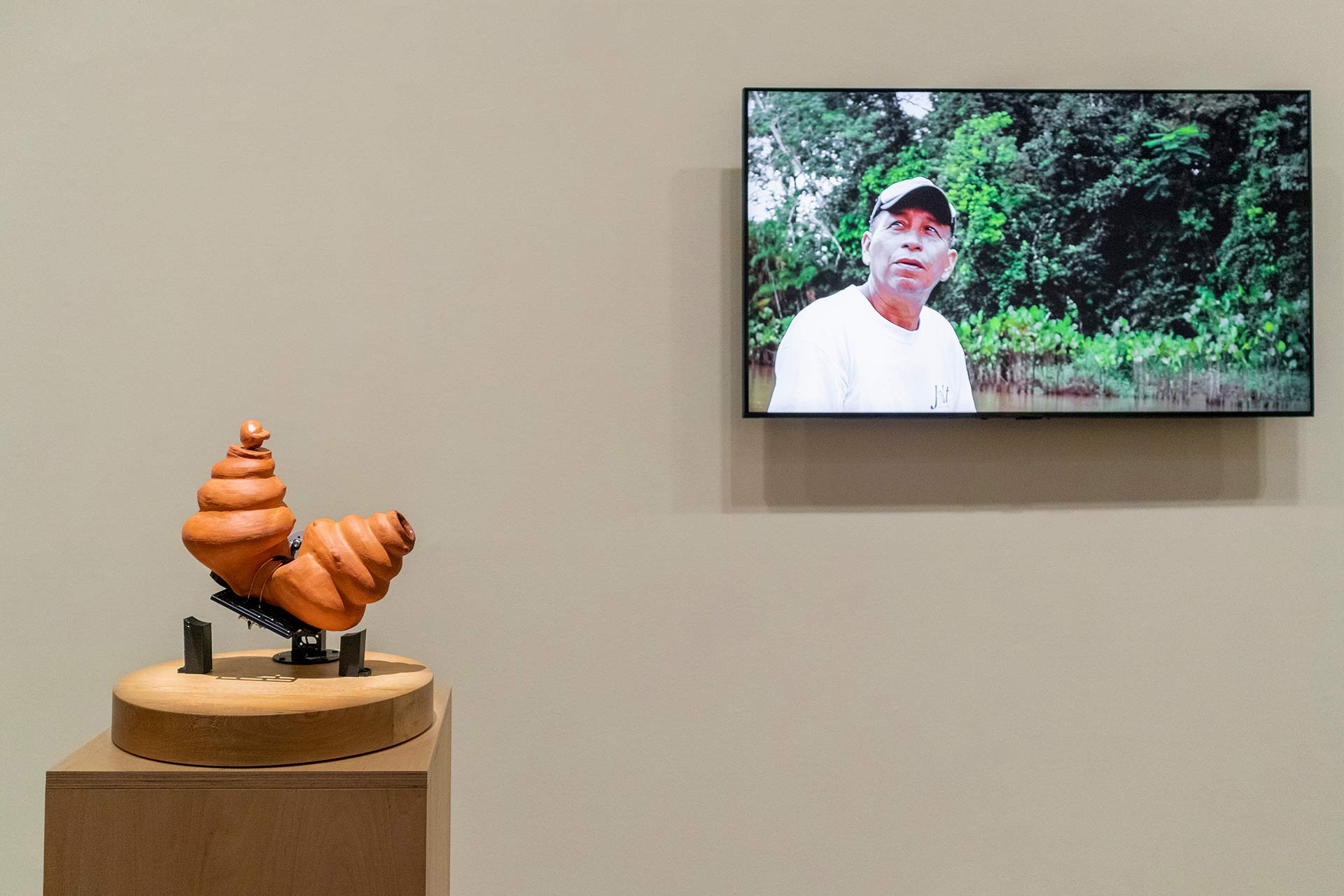Cristian Villavicencio
Quito, 1984

This work is made from a 3D scan of a pre-Columbian sculpture belonging to the Chorrera culture that flourished in Ecuador between 1300 and 300 BCE. Taking the form of a mollusk, the object is a musical wind instrument typically used in indigenous rituals and consists of two interconnected sculptural bodies containing water. The built-in mechanical system at the base rotates the ceramic and produces a whistling sound. Considered a ritual noisemaker, these whistling vessels varied in form to create specific desired sounds that would soften with the addition of water. For this sculptural work, the artist combines history and collective memory by rescuing and reinterpreting an indigenous ceramic and auditory tradition, and adding a new layer of meaning through a contemporary lens. Similarly, in a related video also on view in the gallery, an inhabitant of the Alta Florencia Amazonian community imitates various pitches of animal sounds recorded along Rio Napo at Parque Yasuní, which further echo the musical vibrations emitted from the ceramic.
